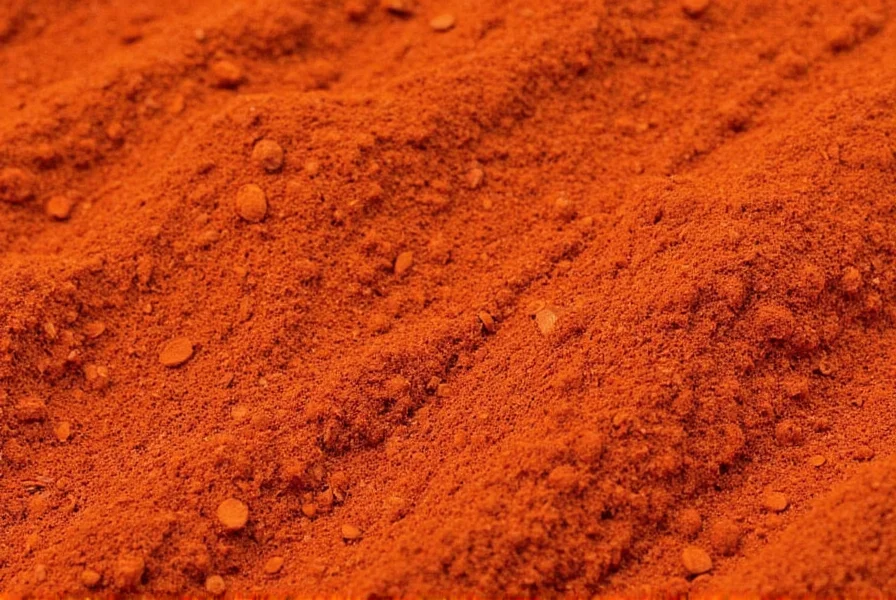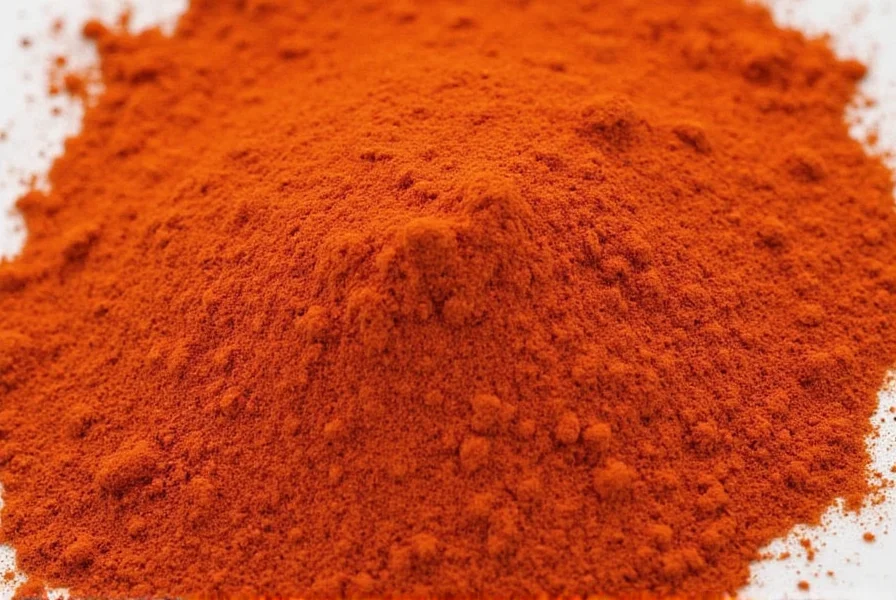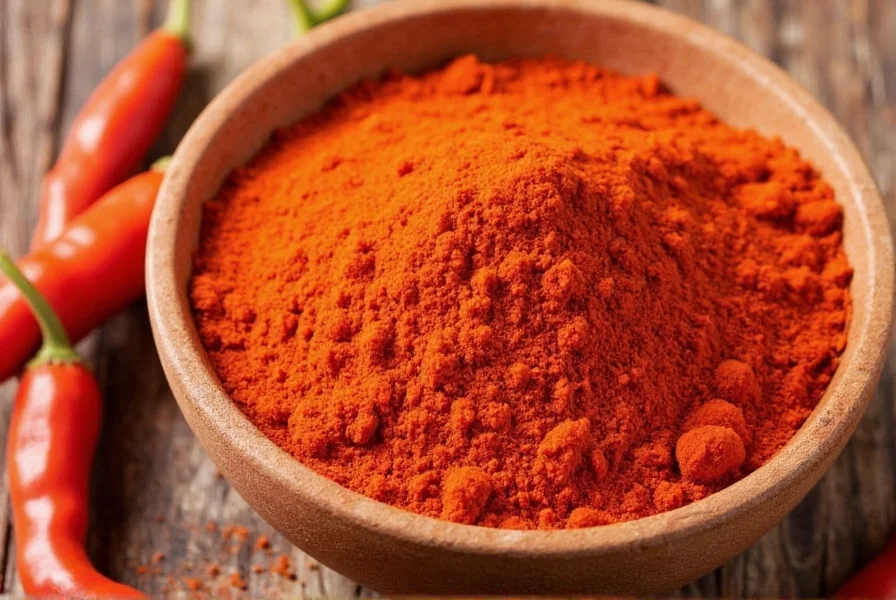Running out of sweet paprika mid-recipe can disrupt your cooking flow. Understanding practical alternatives ensures your dishes maintain their intended flavor profile without compromising quality. Sweet paprika provides vibrant red color and mild, sweet pepper flavor without significant heat, making it essential in Hungarian goulash, Spanish chorizo, and various roasted vegetable dishes.
Understanding Sweet Paprika's Unique Profile
Sweet paprika, made from ground sweet red peppers, delivers rich color and subtle sweetness without spiciness. Unlike its spicy counterparts, it contains minimal capsaicin, registering between 0-100 Scoville units. This distinguishes it from hot paprika (500-1,000 units) and cayenne (30,000-50,000 units). When seeking a replacement for sweet paprika, prioritize options that maintain color integrity while matching the mild flavor profile.
Top 7 Practical Sweet Paprika Substitutes
1. Smoked Paprika (Pimentón)
While not identical, smoked paprika provides similar vibrant color with added depth. Use a 1:1 ratio when substituting in dishes like paella or roasted meats. The key difference lies in the smoky flavor profile from traditional Spanish oak-smoking processes. This replacement for sweet paprika works exceptionally well in barbecue rubs and stews but may overpower delicate dishes like deviled eggs.

2. Bell Pepper Flakes
Dried and crushed bell peppers offer the closest color match without introducing heat. Process dehydrated red bell peppers in a spice grinder until fine. Use 1.5 teaspoons of bell pepper flakes per 1 teaspoon of sweet paprika. This substitute maintains visual appeal in dishes like potato salad while preserving neutral flavor. Many home cooks overlook this replacement for sweet paprika when seeking heat-free alternatives.
3. Mild Chili Powder
Standard chili powder blends typically contain 25-30% sweet paprika already. Substitute using a 3:4 ratio (¾ teaspoon chili powder for 1 teaspoon sweet paprika) to prevent excessive cumin or garlic flavors from dominating. This works particularly well in chili con carne and taco seasoning. Avoid "hot" labeled varieties when seeking a direct sweet paprika replacement.
4. Tomato Paste + Cayenne Blend
For liquid-based dishes, combine 1 tablespoon tomato paste with ⅛ teaspoon cayenne per teaspoon of sweet paprika needed. The tomato concentrate provides color while minimal cayenne mimics paprika's subtle warmth. This replacement for sweet paprika shines in tomato-based sauces and braises but requires careful balancing to avoid overpowering acidity.
5. Aleppo Pepper
This Middle Eastern pepper offers mild heat (10,000 Scoville units) with fruity notes. Use a 1:1.25 ratio (⅛ teaspoon less Aleppo per teaspoon of sweet paprika). Its slightly tangy profile works beautifully in Mediterranean dishes but may alter traditional Hungarian recipes. Many professional chefs consider this an underrated replacement for sweet paprika in complex spice blends.
6. Hungarian Paprika (Sweet Variety)
Not all paprika is created equal. Authentic Hungarian sweet paprika contains specific pepper varieties grown in the Szeged region. If substituting regular sweet paprika with Hungarian variety, maintain 1:1 ratio. The richer flavor profile makes this the ideal replacement for sweet paprika in traditional goulash and chicken paprikash.
7. Sweet Red Pepper Powder
Specialty stores sometimes carry pure sweet red pepper powder without additives. Substitute at 1:1 ratio for identical results. This direct replacement for sweet paprika maintains authentic flavor but can be difficult to find outside culinary specialty shops.
| Substitute | Ratio | Best For | Flavor Notes |
|---|---|---|---|
| Smoked Paprika | 1:1 | Stews, Roasted Meats | Added smokiness |
| Bell Pepper Flakes | 1.5:1 | Cold Dishes, Salads | Neutral, no heat |
| Mild Chili Powder | 0.75:1 | Chili, Tex-Mex | Earthy undertones |
| Tomato Paste + Cayenne | 1 tbsp + 1/8 tsp | Sauces, Braises | Slightly acidic |
| Aleppo Pepper | 1:1.25 | Mediterranean Dishes | Fruity, mild heat |
Cuisine-Specific Substitution Guidance
When replacing sweet paprika in traditional recipes, consider regional variations. Hungarian cuisine relies on specific pepper varieties that give authentic paprikash its distinctive flavor. For Spanish recipes, smoked paprika often works better as a replacement for sweet paprika due to shared culinary traditions. In American barbecue applications, a blend of mild chili powder and a touch of garlic powder creates the most authentic substitute.
Avoiding Common Substitution Mistakes
Many home cooks make critical errors when seeking a replacement for sweet paprika. Using hot paprika in equal amounts will significantly increase dish spiciness. Cayenne pepper requires extreme caution—use only ⅛ teaspoon per tablespoon of sweet paprika needed. Commercial chili powders vary widely in composition; always check ingredient lists for added salt or preservatives that could alter your recipe's balance.
Storage Tips for Paprika Alternatives
Proper storage maintains substitute quality. Keep all paprika alternatives in airtight containers away from light and heat. Ground spices lose potency within 6 months, so label containers with purchase dates. For long-term storage of your sweet paprika replacement, consider freezing in vacuum-sealed bags—this preserves flavor compounds up to 18 months.

Creating Custom Paprika Blends
For frequent cooking needs, develop personalized sweet paprika alternatives. Combine equal parts dried sweet red bell pepper and mild chili powder for a versatile base. Add 10% smoked paprika for depth in meat dishes. Professional chefs often maintain three custom blends: one for poultry, one for vegetables, and one for sauces—each slightly adjusted for optimal performance as a replacement for sweet paprika.
Frequently Asked Questions
Can I use regular paprika instead of sweet paprika?
Yes, but check the label first. "Regular" paprika often means sweet paprika in many regions. If it specifies "hot" or "spicy," use only half the amount and balance with bell pepper flakes to maintain mild flavor.
What's the best sweet paprika substitute for deviled eggs?
Bell pepper flakes provide identical color without altering the delicate flavor profile. Process dried red bell peppers to a fine powder and use 1.5:1 ratio. This replacement for sweet paprika maintains the classic presentation without introducing unwanted heat.
How do I substitute sweet paprika in Hungarian goulash?
Authentic Hungarian goulash requires specific pepper varieties. Use genuine Hungarian sweet paprika as your primary replacement. If unavailable, combine mild chili powder (2 parts) with tomato paste (1 part) and a pinch of caraway to approximate traditional flavor when seeking a sweet paprika substitute.
Can I make my own sweet paprika substitute?
Absolutely. Dehydrate sweet red bell peppers completely, then grind to a fine powder. For enhanced flavor, add 10% dried tomato peel. This homemade replacement for sweet paprika captures the authentic taste profile and avoids additives found in commercial blends.
Does paprika lose potency over time?
Yes, paprika degrades faster than many spices due to its high oil content. Most sweet paprika replacements maintain peak potency for 6 months when stored properly. Test freshness by rubbing a small amount between fingers—if aroma is weak, you'll need more of your sweet paprika substitute to achieve desired flavor.











 浙公网安备
33010002000092号
浙公网安备
33010002000092号 浙B2-20120091-4
浙B2-20120091-4